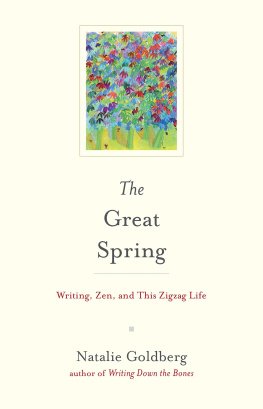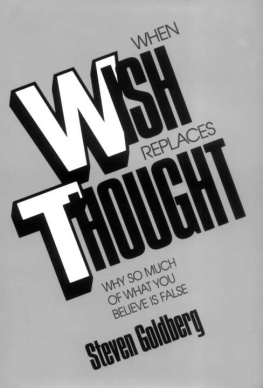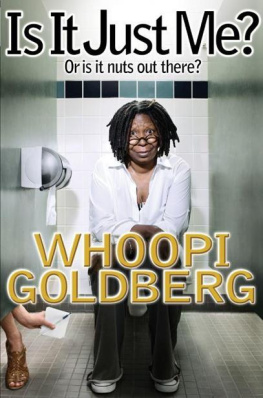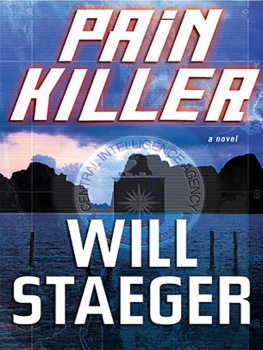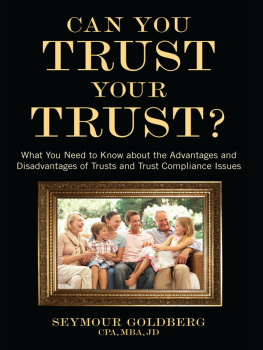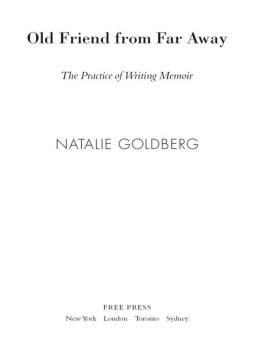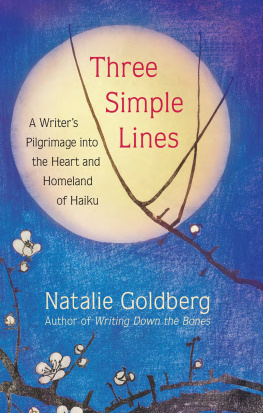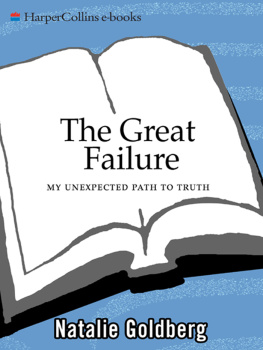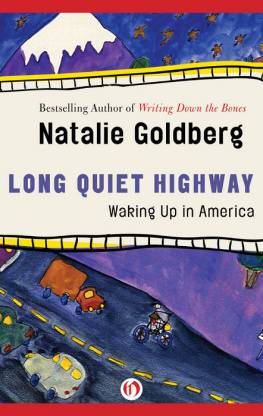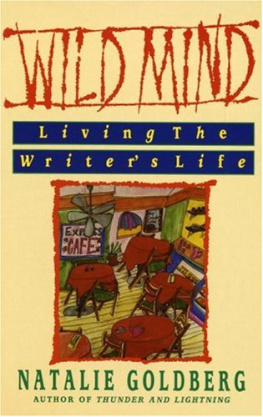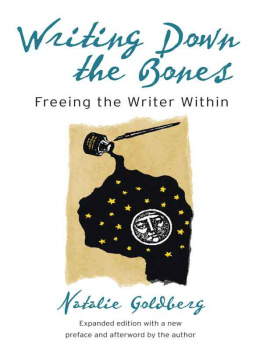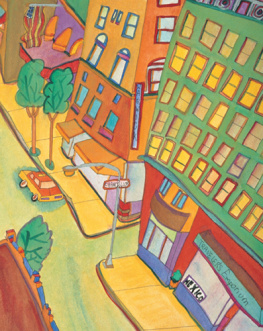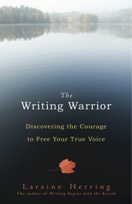Natalie Goldberg is one of the worlds most beloved writing teachers, a mentor who has inspired millions to take up the pen and write. Here, in The Great Spring, a collection of her best short essays on food, family, writing, painting, meditation, travel, love, loss, death, and enlightenment, she follows her own sage counsel, writing her way toward an understanding of what it is to be fully alive.
Ruth Ozeki, author of A Tale for the Time Being
At times rhapsodic, at others profound, Natalie Goldberg delivers her heart in The Great Spring. Shes courageous to bring us this great ride through her life.
David Chadwick, author of Crooked Cucumber
The Great Spring is a wonderful jaunt through a womans life. What a solace it is to know there is a smart, stubborn, outspoken human being in the world who is obsessed with figuring it all out. After reading Natalie Goldbergs The Great Spring, I felt a stirringsomething curious, nostalgic, and something Id sorely missed: there is hope for all of us.
Tom Spanbauer, author of I Loved You More
No one writes about Zen and writing and being human with more honesty, verve, and punch than Natalie Goldberg. Now in the fullness of her Great Spring, she tells, with more vividness and wisdom than ever before, stories from her life illuminated by the Zen teachings and practice that have informed it. I promise you will be, as I was, enthralled from the first page to the last. This may be her best book yet!
Zoketsu Norman Fischer, Zen priest, author of Experience: Thinking, Writing, Language, and Religion; What Is Zen?: Plain Talk for a Beginners Mind; and Magnolias All at Once
Goldberg writes observantly, with a direct simplicity. She gently catches your eye while piercing the soul. To read her is to invite your own transformation.
Jonathan Odell, author of Miss Hazel and the Rosa Parks League
ABOUT THE BOOK
Lets be honest: Life is not a straight shot. It unrolls crooked, at a slant and zigzag. Here beloved writing teacher and author Natalie Goldberg shares those vivid moments that have brought her a felt sense of vitality and opened her up to new ways of being alivefrom getting lost in the arid wilderness of New Mexico to playing ball with her father as a child on Long Island, reflecting on the dusty beginnings of Zen in the Midwest, and receiving the shocking blow of a bad health diagnosis. Deep down in her work, Natalie remains grounded in her two constants: a life informed by the practices of writing and Zen. Yet all the while there is an undercurrent of questioning and searching: Where does this life lead? Who are we? This is a book to be relished, devoured, and digested, one awakening at a time. Each piece is a reminder that no matter how hard the situation or desolate you may feel, spring will come again, breaking through a cold winter, bringing early yellow forsythia flowers. And the Great Spring of enlightenmentthat sudden rush of acceptance, pain cracking open, obstructions shatteringwill also burst forth.
NATALIE GOLDBERG is the author of ten books. Writing Down the Bones, her first, has sold over one million copies and has been translated into twelve languages. For the last thirty years she has practiced Zen and taught seminars in writing as a spiritual practice. She lives in New Mexico.
Sign up to receive news and special offers from Shambhala Publications.

Or visit us online to sign up at shambhala.com/eshambhala.
The
GREAT SPRING

Writing, Zen, and This Zigzag Life

Natalie Goldberg

SHAMBHALA
Boulder
2016
Shambhala Publications, Inc.
4720 Walnut Street
Boulder, Colorado 80301
www.shambhala.com
Cover art by Natalie Goldberg
Cover design by Jim Zaccaria
2016 by Natalie Goldberg
All rights reserved. No part of this book may be reproduced in any form or by any means, electronic or mechanical, including photocopying, recording, or by any information storage and retrieval system, without permission in writing from the publisher.
LIBRARY OF CONGRESS CATALOGING-IN-PUBLICATION DATA
Goldberg, Natalie.
The great spring: writing, zen, and this zigzag life / Natalie Goldberg.First edition.
pages cm
eISBN 978-0-8348-4002-7
ISBN 978-1-61180-316-7 (hardcover: acid-free paper)
1. Authorship. 2. Zen Buddhism. 3. Creative writing. 1. Title.
PN145.G634 2016
808.02dc23
2015008186
For Baksim and Pearlie with Love
CONTENTS
People come up to me and say, I love your book.
Mostly I know what they mean, but I become difficult and a bit ornery. Which one? I ask. Ive written fourteen.
I ought to feel grateful that Im still being read, that my work has continued, and simply take in the pleasure that I might have helped someone with the early inspired energy of Writing Down the Bones, my first book on practice.
It is auspicious that with The Great Spring I have returned to Shambhala, its publisher. Like a big circle closing, the arc is completed. The thirty-year-anniversary special edition of Writing Down the Bones and this new book will be released at the same time.
I joke that big brother Bones will introduce the public to little sister Spring. But in actuality The Great Spring holds a more mature knowing, saying in an even clearer, more experienced way what is important. I have searched through these stories to find answersif answers are ever possibleabout who I am and who I have become, standing on the ground of being, driven by the practice of Zen and writing.
There are many ways to manifest our true life. In Bones I promised to continue. Here are some of the ways I have done so. Please join me in this deep practice of honoring all of our moments. I cannot do it alone. We are here, but not forever.

Fat Robins Arrive
Listen to the rain, instructs my ninth-grade English teacher, Mr. Clemente, one March afternoon as he flipped off the lights at the beginning of class. There was to be no essay to write or any test on rain. He simply wanted us to listen. We could even put our heads down on our desks if we wanted.
For a few minutes in the regulated school day, we experienced a moment of space, a recognition that something existed outside the classroom. A torrent was hitting pavement and bouncing, sinking into grass, pounding on the window. It was an acknowledgment that an element unknowable and mysterious could be encountered with our senses without referring it to our thinking brains. I felt and smelled rain. It coursed through my blood.
After six minutes Mr. Clemente switched on the light and we abruptly moved into analyzing Portrait of the Artist as a Young Man, removing ourselves from the true origin of inspiration: a rootedness in the body and the breath. Though Joyce imbued those pages with essential connections, we dissected his novel rather than staying close to it.
Perhaps the power of those six minutes was intensified because it was so unlikely in our usual scheduled day, like a dangling clause, unrelated to the rest of the sentence. Though I did not pick up a pen and attempt to write a word until I was twenty-four years old, the true heart of a writer was born in me that day. From then on, dreaming became legitimate. Intuiting something beyond the ordinary, yet at the same time smack in the familiar, eventually grew into my lifes work. That one afternoona Wednesdayliberated me. The downpour was mine.
Next page
